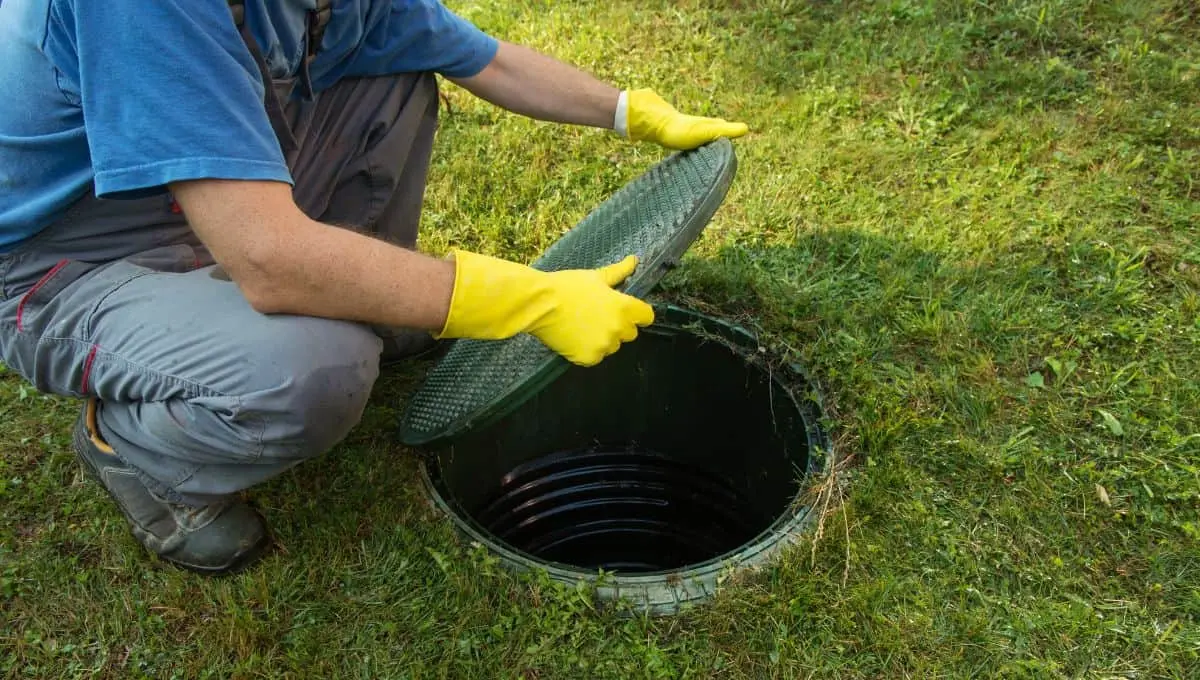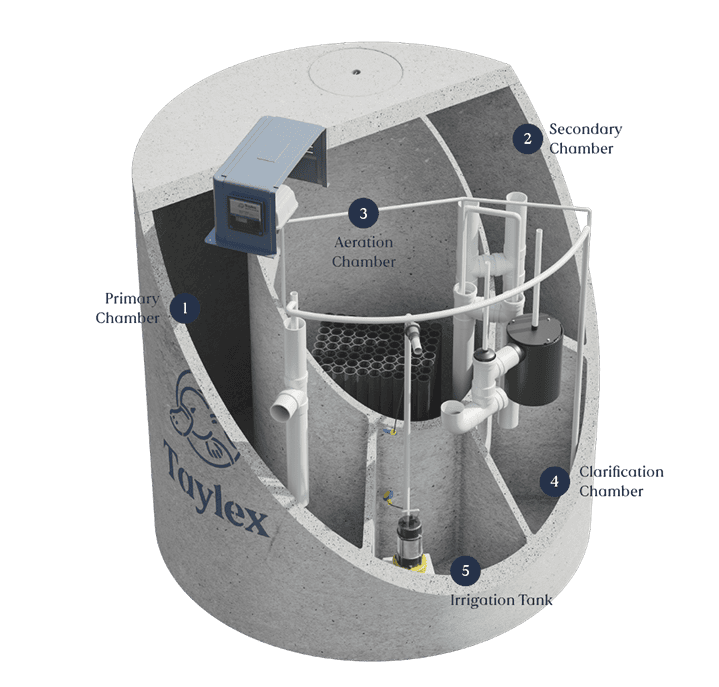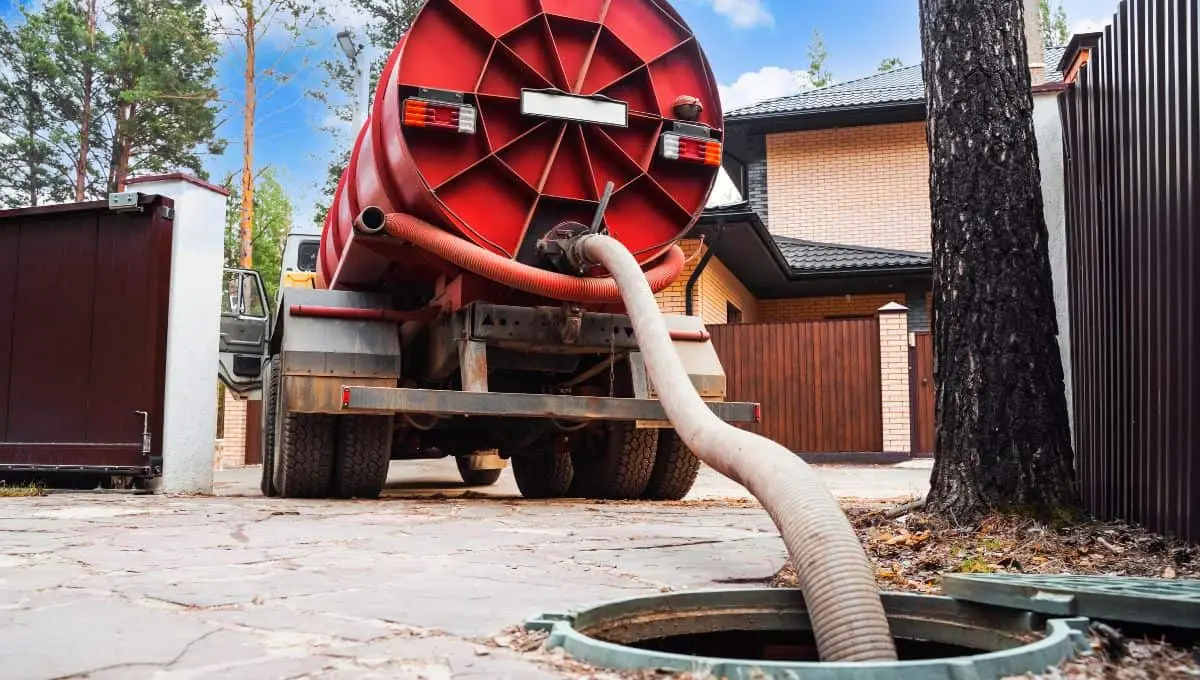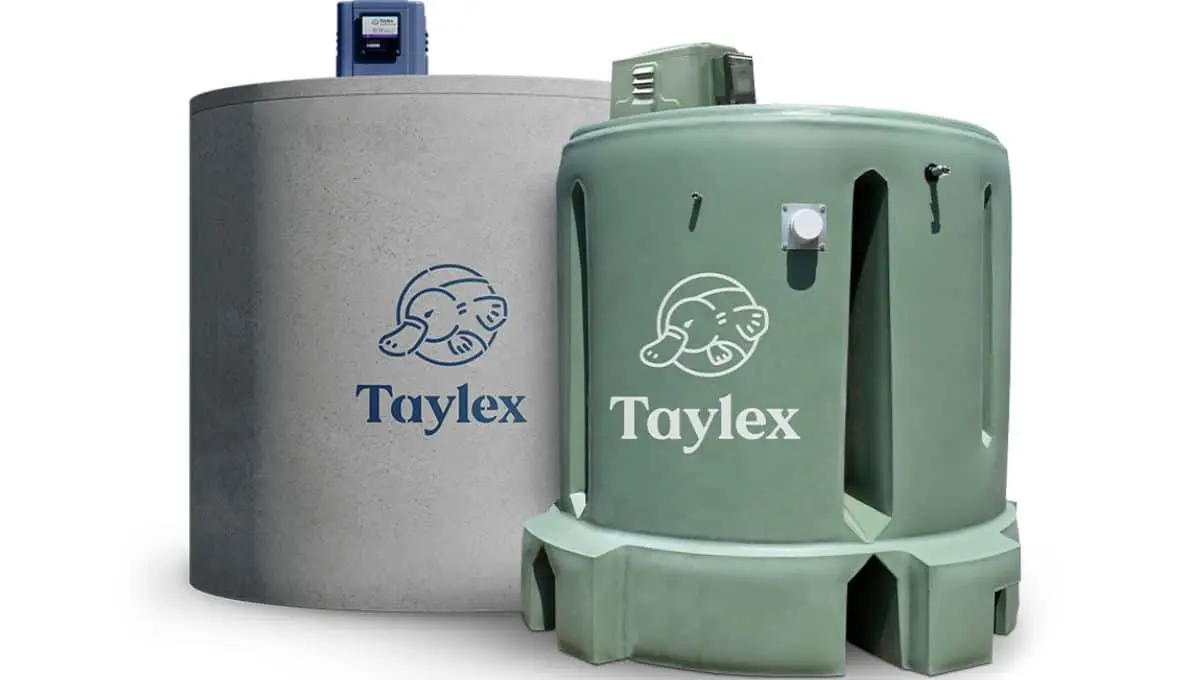
Living in rural areas presents unique challenges when it comes to managing wastewater. Wastewater treatment systems often fall short. However, the Aerated Wastewater Treatment System (AWTS) is different. It has a remarkable ability to treat different sewage types without environmental harm. Let’s look at the features, installation, and benefits of AWTS. It will help us understand how they can manage wastewater better.
What is AWTS?
AWTS stands for Aerated Wastewater Treatment System, which treats household wastewater. This system is particularly effective in areas without sewers. The self-contained system treats all household wastewater from toilets, bathrooms, kitchens, and laundries. The quality of the final effluent in AWTS is very high. You can reuse it to water your gardens and lawns. It’s safer for your family’s health, neighbours’ properties, and local waterways.
Want to learn more about household wastewater? Check out our detailed post on “Wastewater.“
How Does an Aerated Wastewater Treatment System (AWTS) Work?
Aerated Wastewater Treatment System works in multiple chambers for wastewater treatment. It starts in the Primary Clarifier Chamber, where solids settle into layers. Next, in the Aeration Chamber, oxygen helps microbes break down waste. Then, the Settling Chamber removes the remaining solids. Finally, the Disinfectant Chamber chlorinates the effluent. Chlorination removes harmful pathogens before discharge or reuse.

1. Primary Clarifier Chamber (Anaerobic Biological Treatment)
The Primary Clarifier Chamber collects all wastewater from your bathrooms, kitchen, and laundry. This chamber allows the wastewater to settle into three distinct layers:
- Scum Layer: The fats, oils, and grease (FOGs) float to the surface and form a thin layer called scum.
- Effluent Layer: The liquids, also known as effluent, remain in the middle layer.
- Sludge Layer: The solids settle at the bottom of the tank, creating a sludge layer.
As new water enters the house, it pushes the existing effluent forward. This effluent, already treated initially, moves to the next chamber for further processing.
2. Aeration Chamber
The Aeration Chamber is the second stage of treatment. An aeration pump aerates the effluent in the Primary Clarifier Chamber with oxygen. This process helps the ‘live’ microbes in the water digest and break down the organic waste. The continuous supply of oxygen supports the growth and activity of beneficial microbes. It enhances the breakdown of organic matter in the wastewater.
3. Settling Chamber (Clarification)
The treated water undergoes further clarification in the setting chamber. This chamber allows any remaining solids to settle out of the effluent. The system sends the settled solids back for more treatment. They return to either the Primary Clarifier Chamber or the Aeration Chamber. This step ensures the effluent is clear before the final treatment stage.
4. Disinfectant Chamber (Chlorination )
The Disinfectant Chamber often has a chlorinator system. It is where the final treatment of the effluent occurs. This chamber disinfects the effluent, removing harmful bacteria, viruses, and pathogens. The disinfection process ensures the water is clean and safe for irrigation. When the chamber reaches a certain level, a float switch activates. It engages an irrigation pump, sending the treated effluent to the irrigation field.
Benefits of AWTS
Aerated wastewater treatment systems (AWTS) can treat effluent to a high standard. It provides excellent wastewater management services and helps protect the environment from pollution. Here are the benefits of using AWTS across different sectors:
1. Environmental Benefits
- Pollution Reduction:
AWTS removes harmful pollutants like FOGs, chemicals, and organic matter from wastewater, significantly reducing environmental contamination. - Water Conservation:
We can reuse the treated water from AWTS. This water is beneficial for irrigation, landscaping, and industrial processes. Reusing treated water helps conserve precious freshwater resources. - Ecosystem Protection:
AWTS prevents pollutants from entering natural water bodies. This system helps maintain healthy aquatic ecosystems and protects biodiversity.
2. Health Benefits
- Improved Public Health:
Exposure to contaminated water increases the risks of waterborne disease and health issues. Properly treated wastewater contributes to improved public health. - Cleaner Living Environments:
AWTS minimises the presence of harmful pathogens and bacteria. It ensures safer and cleaner surroundings for communities.
3. Economic Benefits
- Cost Savings:
Reusing treated water reduces the demand for fresh water. It leads to lower water bills and cost savings for businesses and households. - Increased Property Value:
Properties equipped with AWTS are often valued more. It is due to the sustainable and efficient wastewater management system.
4. Sustainability
- Resource Recovery:
AWTS recovers valuable resources like nutrients and energy from wastewater. This recovery contributes to a circular economy. - Reduced Carbon Footprint:
Efficient wastewater treatment processes in AWTS use less energy. It emits fewer greenhouse gases than traditional methods. This process supports climate change mitigation efforts. - Long-term Viability:
Designers build AWTS systems for durability and reliability. These systems ensure sustainable wastewater management for years.
5. Convenience and Reliability
- Low Maintenance:
AWTS often incorporate advanced technologies that require minimal maintenance. They are also user-friendly. - Dependable Performance:
These systems provide consistent and reliable treatment results. They ensure compliance with environmental regulations and standards. - Scalability:
You can customise and scale AWTS. Customisation helps meet the specific needs of different communities, industries, and applications and offers flexibility and adaptability.
How Do I Care for My Aerated Wastewater Treatment System (AWTS)?

Use AWTS maintenance services to ensure the proper functioning of your septic system. It will help prolong the longevity of your septic system. Here are some effective ways to help you care for your AWTS:
1. Septic Tank Services
Schedule regular professional septic tank services to inspect and maintain your system. Professionals can check for wear and tear, leaks, or other issues that might compromise the efficiency of your AWTS. Routine maintenance helps prevent problems and ensures smooth operation. AWTS septic tanks must receive regular service and be compliant with government authorities. Accredited and licensed plumbers must perform this service. We recommend performing this service at least once every three years.
Want to understand septic tanks better? See our informative post on “What is a septic tank?”
2. Reduce Your Use of Cleaning Products
Limit the use of harsh cleaning products that can disrupt the balance of microbes in your AWTS. Many household cleaners, disinfectants, and bleaches contain chemicals that can kill beneficial bacteria, which are essential for breaking down waste. Opt for biodegradable and eco-friendly cleaning products whenever possible. This practice supports the natural biological processes within your AWTS.
Want to learn more about cleaning products? See our detailed post on “List of Cleaning Products Safe for Septic Systems.”
3. Desludge / Septic Tank Clean
Schedule regular desludging of your septic tank. It will help remove the accumulated sludge and scum layers. The desludging frequency depends on the size of your tank and the amount of wastewater your household generates. However, we recommend desludging every 5 years. It is essential to keep the sludge and scum levels in check. It prevents overflow and ensures efficient wastewater treatment.
4. Clean Your Irrigation Filter
The irrigation filter in your AWTS prevents solids from blocking the irrigation system. Regularly clean and inspect the filter to maintain a steady flow of treated effluent to your irrigation field. A clean filter ensures your irrigation system works efficiently, promotes healthy plant growth, and prevents blockages that could cause system backups.
5. Avoid Shock Loads Of Water
Avoid quickly introducing large volumes of water into your AWTS, known as shock loads. Sudden water surges can overwhelm the system, disrupting the treatment process. As a result, it may lead to system failure. Spread out activities like laundry, dishwashing, and bathing throughout the day. Doing so maintains a balanced water flow into the system. Install water-saving fixtures and practice water conservation. They can help manage water usage more effectively.
Regulations and Standards for AWTS
The AWTS system requires certification under the previous Australian Standard AS 1546.3:2008. This standard is for on-site domestic wastewater treatment units. It covers the design, performance, and conformity testing of aerated wastewater treatment systems. Moreover, installation of these systems in Western Australia requires approval from the Chief Health Officer.
Common Issues With an AWTS
Understanding the common issues can help AWTS users and operators take proactive measures. These steps ensure the efficient and effective functioning of their systems. As a result, it provides reliable wastewater treatment and minimises potential disruptions. Some of the common issues include:
1. Slow-Draining Water
One common issue with AWTS is slow-draining water. This may be a sign of blockages or clogs within the system, which may result from accumulated fats, oils, grease (FOGs), or other debris. Regular maintenance and cleaning can help prevent this problem.
2. Gurgling Drain Pipes
Gurgling sounds from drain pipes are another common issue. It may suggest trapped air within the system. Blockages, improper venting, or the system’s air release mechanism may cause air traps. Promptly addressing these sounds can prevent more serious problems.
3. Foul Odours
Odours may emanate from the AWTS. These foul odours are a sign of malfunction or inadequate wastewater treatment. Possible causes include system overload, insufficient aeration, or a buildup of organic matter. Regular inspection and maintenance can help mitigate these odour issues.
Want to learn more? Check out our detailed post on “smelly drains.”
4. Water Backing Up
Water backing into sinks, toilets, or other fixtures is a serious concern. This problem can signify blockages, pump failures, or overloaded systems. Immediate attention is necessary to prevent property damage. Doing so will ensure the correct operation of the system.
5. Wastewater Pooling in the Land Application Space
Treated wastewater pooling in the land application area may need to be fixed. The soil may absorb insufficient effluent, or there could be uneven distribution. There could also be an overload in the system. Check the irrigation setup and ensure proper land application practices to fix this.
6. Noisy Pumping Equipment
Excessive noise from pumping equipment can indicate mechanical issues. These problems could be wear and tear, misalignment, or blockages. Regular maintenance and timely repairs can extend the equipment’s lifespan and ensure efficient operation.
7. Poor Vegetation Growth in Irrigated Areas
Poor vegetation growth in irrigated areas may suggest imbalanced nutrients or salinity. It could also be a sign of inadequate water distribution. Soil testing and adjusting the treatment process can help promote healthier plant growth.
8. Black Coloured Effluent in the Aerated Tank
Black effluent in the aerated tank can be a sign of insufficient aeration. It may also suggest an excessive organic load or aeration system malfunction. Proper aeration and regular system checks can help maintain the effluent’s quality.
Do’s and Dont’s of AWTS
The major DO’s and dont’s of AWTS are:
Do’s:
- Ensure you have a maintenance contract with an approved service provider to service your AWTS regularly.
- Always keep the system accessible while safeguarding it from unauthorised access.
- Immediately contact your service provider if the system shows alarms or emits strange odours.
- Prevent system overload by promptly fixing leaks or running toilets.
- Use toilet paper that easily breaks down.
- Follow the service agent’s recommendations for cleaning products, such as washing soda for toilets, baths, and basins.
- Maintain detailed records of your AWTS. Include the model number, service contracts, and maintenance history.
Don’t:
- Do not use bleach, ammonia, antiseptic, antibacterial agents, or strong detergents.
- Do not dispose of chemicals in the system. Chemicals include paints, varnishes, thinners, photographic chemicals, pesticides, and perming lotions.
- Do not install garbage grinders, as they can overwhelm the system.
- Never switch it off.
- Avoid covering tanks with earth, concrete, pavers, pine bark, or mulch. These can fall into the tank during maintenance.
- Do not allow vehicles to park or drive over the system, and keep animals away from the land application area.
How Do Aerated Wastewater Treatment Systems (AWTS) Differ from Other Treatment Methods?

AWTS uses anaerobic and aerobic bacteria to treat wastewater effectively. It produces a higher-quality effluent. We can safely use these effluents for irrigation, above-ground applications, and groundwater recharge. AWTS effluent undergoes treatment and quality enhancement. In contrast, other septic tank systems discharge effluent below ground, a form of contamination. The unique features of the aerated system set it apart from different wastewater treatment methods. These features include:
- High-quality effluent: Produces a superior quality of treated wastewater.
- Versatile Surface Application: Suitable for use on various types of land surfaces.
- Ideal for Limited Access: Perfect for properties with restricted or challenging access points.
Applications of Aerated Wastewater Treatment Systems
Aerated wastewater treatment systems are versatile and have applications in various areas. Here’s a brief overview of their application in different sectors:
1. Industrial Areas
Industrial areas often use aerated wastewater treatment systems. These generate large volumes of wastewater with high organic loads and pollutants, such as:
- Manufacturing plants
- Food and beverage processing facilities
- Chemical production factories
- Textile industries
2. Commercial Areas
Commercial locations use aerated wastewater treatment systems. These areas include:
- Shopping malls
- Office buildings
- Hotels and resorts
- Restaurants
3. Household Areas
Aerated wastewater treatment systems can treat domestic sewage in residential settings. It is especially useful in areas without centralised sewer systems. These areas include:
- Individual homes
- Apartment complexes
- Residential communities
4. Irrigation Areas:
Treated wastewater can be reused for irrigation, contributing to water conservation and sustainable agriculture in areas such as:
- Agricultural fields
- Gardens and landscaping
- Parks
Aerated wastewater treatment systems benefit each area by efficiently reducing organic matter, nutrients, and pathogens in wastewater, making it suitable for reuse or safe discharge into the environment.
How Much Does an AWTS System Cost?
The cost of AWTS depends on its installation and service charge:
- Local governments charge application fees to install AWTS systems.
- AWTS purchase and installation are part of the total system price.
- Service charges cover 3 months of the system’s life.
- The overall expenses include the periodic desludging costs.
- The system covers replacement costs for components like pumps in case of breakdowns.
Why Choose Taylex as Your AWTS Expert?
Taylex is a premier choice for Aerated Wastewater Treatment Systems (AWTS). We are proud of our extensive (over five decades) water management experience. Our collaboration with top engineers leads us to develop innovative and reliable products. We have tailored these products to the diverse residential, commercial, and civil project needs. Our ABS|OEP and ABS|8EP systems treat up to 2000 and 1200 litres of wastewater daily. This treatment significantly reduces nitrogen and phosphorus levels.
Our AWTS system is globally certified and meets the AS 1546.3:2008 standards. Taylex uses high-quality materials and construction. This top-notch quality ensures long-term durability and performance. We have a track record of successful installations and satisfied clients. Our comprehensive support includes full-service installation and maintenance. It makes Taylex ideal for those seeking reliable wastewater management solutions. Investing in Taylex ensures a secure, sustainable future for properties and the environment.
Aerated Wastewater Treatment System (AWTS) FAQs
What is the Difference Between a Septic Tank and an AWTS?
The major difference between a septic tank and an AWTS:
- The septic tank uses anaerobic bacteria, whereas AWTS uses both anaerobic and aerobic bacteria.
- AWTS produces higher-quality effluent for above and below-ground use. Septic tank effluent can only be discharged below ground and is considered a contaminant.
Need to know more about the workings of a septic tank? Check out our full breakdown on “How Does a Septic Tank Work?”
What are the Characteristics of Aerated Wastewater Treatment Systems?
The Characteristics of Aerated Wastewater Treatment System are:
- Aeration: Provides oxygen to assist aerobic bacteria.
- Biological Treatment: Utilizes aerobic microorganisms to break down organic substances.
- Multiple Treatment Stages: Comprises primary (solid separation), secondary (biological treatment), and, at times, tertiary (advanced purification).
- Clarification: Separates treated water from sludge.
- Disinfection: Eliminates pathogens from the effluent.
- Sludge Management: Manages and disposes of produced sludge.
- Automated Control: Monitors and regulates system parameters for optimal functioning.
- Nutrient Removal: Can eliminate nitrogen and phosphorus to prevent contamination.
- High-Quality Effluent: Generates clean effluent suitable for release or reuse.
- Versatile Application: Appropriate for households, industrial, and agricultural wastewater.
What is the Capacity Of AWTS?
The capacity of an Aerated Wastewater Treatment System (AWTS) varies depending on household size, water usage, local regulations, and system design. However, AWTS can handle at least one day’s wastewater from a typical household with a maximum of ten residents. The system can handle the household’s volume of sewage within 24 hours.